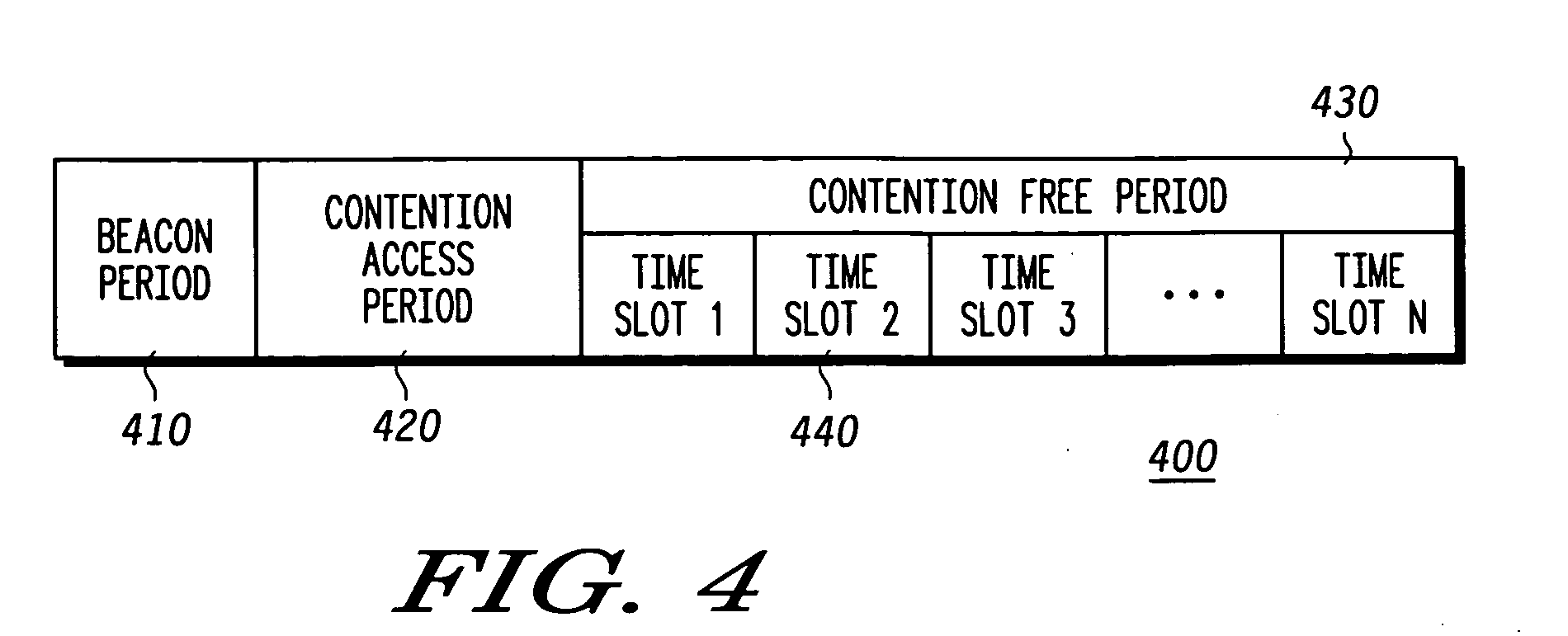Common signalling mode for use with multiple wireless formats
a signalling mode and wireless technology, applied in the field of wireless communication systems, can solve the problems of incompatibility of new formats with existing formats, unreadable signals sent using one of these formats,
- Summary
- Abstract
- Description
- Claims
- Application Information
AI Technical Summary
Problems solved by technology
Method used
Image
Examples
Embodiment Construction
[0030] As in any communication system, wireless networks must function under a known format. The International Standards Organization's (ISO) Open Systems Interconnection (OSI) standard provides a seven-layered hierarchy between an end user and a physical device through which different systems can communicate. Each layer is responsible for different tasks, and the OSI standard specifies the interaction between layers, as well as between devices complying with the standard.
[0031]FIG. 1 shows the hierarchy of the seven-layered OSI standard. As seen in FIG. 1, the OSI standard 100 includes a physical layer 110, a data link layer 120, a network layer 130, a transport layer 140, a session layer 150, a presentation layer 160, and an application layer 170.
[0032] The physical (PHY) layer 110 conveys the bit stream through the network at the electrical, mechanical, functional, and procedural level. It provides the hardware means of sending and receiving data on a carrier. The data link lay...
PUM
 Login to View More
Login to View More Abstract
Description
Claims
Application Information
 Login to View More
Login to View More - R&D
- Intellectual Property
- Life Sciences
- Materials
- Tech Scout
- Unparalleled Data Quality
- Higher Quality Content
- 60% Fewer Hallucinations
Browse by: Latest US Patents, China's latest patents, Technical Efficacy Thesaurus, Application Domain, Technology Topic, Popular Technical Reports.
© 2025 PatSnap. All rights reserved.Legal|Privacy policy|Modern Slavery Act Transparency Statement|Sitemap|About US| Contact US: help@patsnap.com



